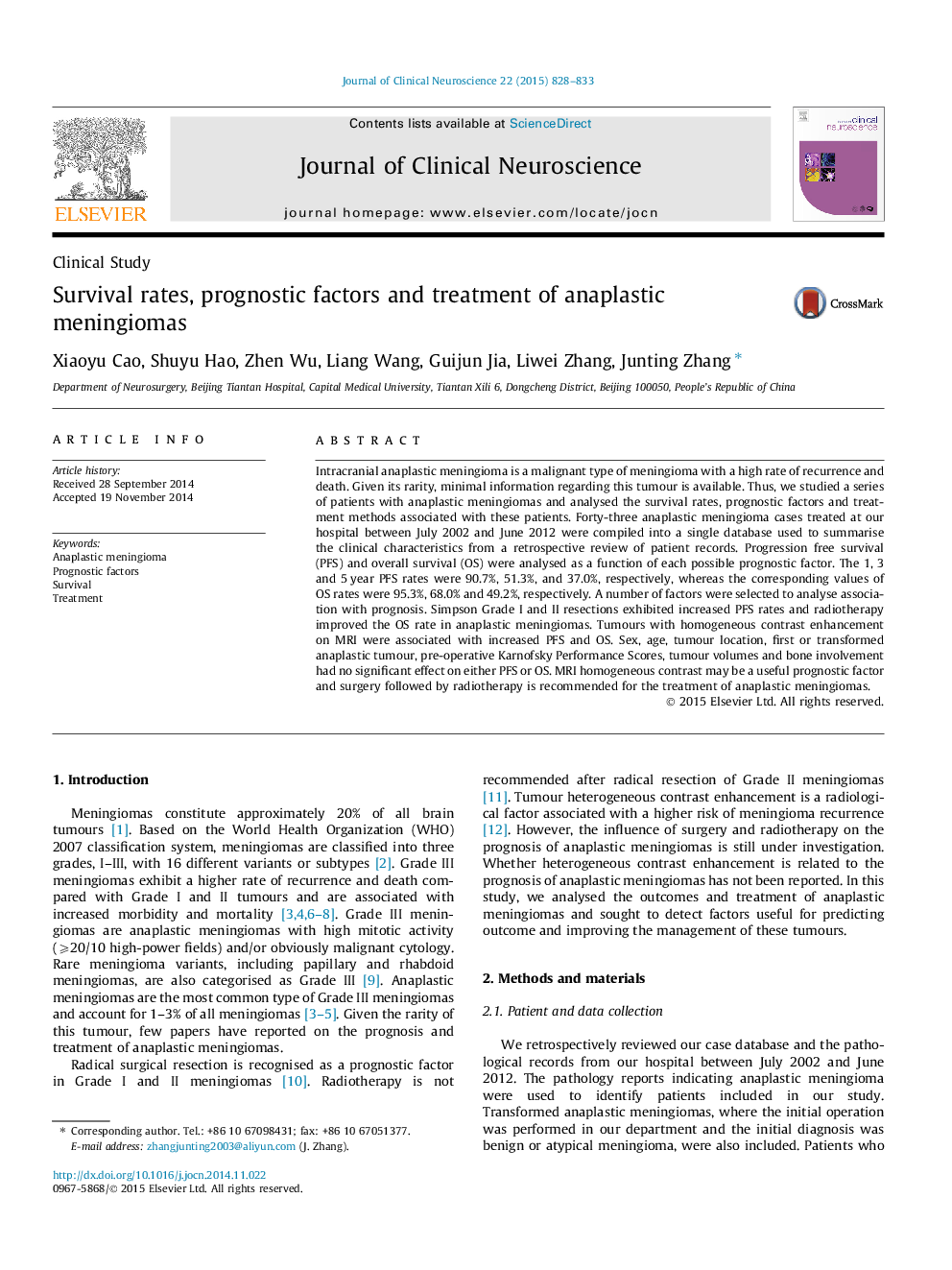| Article ID | Journal | Published Year | Pages | File Type |
|---|---|---|---|---|
| 3059281 | Journal of Clinical Neuroscience | 2015 | 6 Pages |
Intracranial anaplastic meningioma is a malignant type of meningioma with a high rate of recurrence and death. Given its rarity, minimal information regarding this tumour is available. Thus, we studied a series of patients with anaplastic meningiomas and analysed the survival rates, prognostic factors and treatment methods associated with these patients. Forty-three anaplastic meningioma cases treated at our hospital between July 2002 and June 2012 were compiled into a single database used to summarise the clinical characteristics from a retrospective review of patient records. Progression free survival (PFS) and overall survival (OS) were analysed as a function of each possible prognostic factor. The 1, 3 and 5 year PFS rates were 90.7%, 51.3%, and 37.0%, respectively, whereas the corresponding values of OS rates were 95.3%, 68.0% and 49.2%, respectively. A number of factors were selected to analyse association with prognosis. Simpson Grade I and II resections exhibited increased PFS rates and radiotherapy improved the OS rate in anaplastic meningiomas. Tumours with homogeneous contrast enhancement on MRI were associated with increased PFS and OS. Sex, age, tumour location, first or transformed anaplastic tumour, pre-operative Karnofsky Performance Scores, tumour volumes and bone involvement had no significant effect on either PFS or OS. MRI homogeneous contrast may be a useful prognostic factor and surgery followed by radiotherapy is recommended for the treatment of anaplastic meningiomas.
